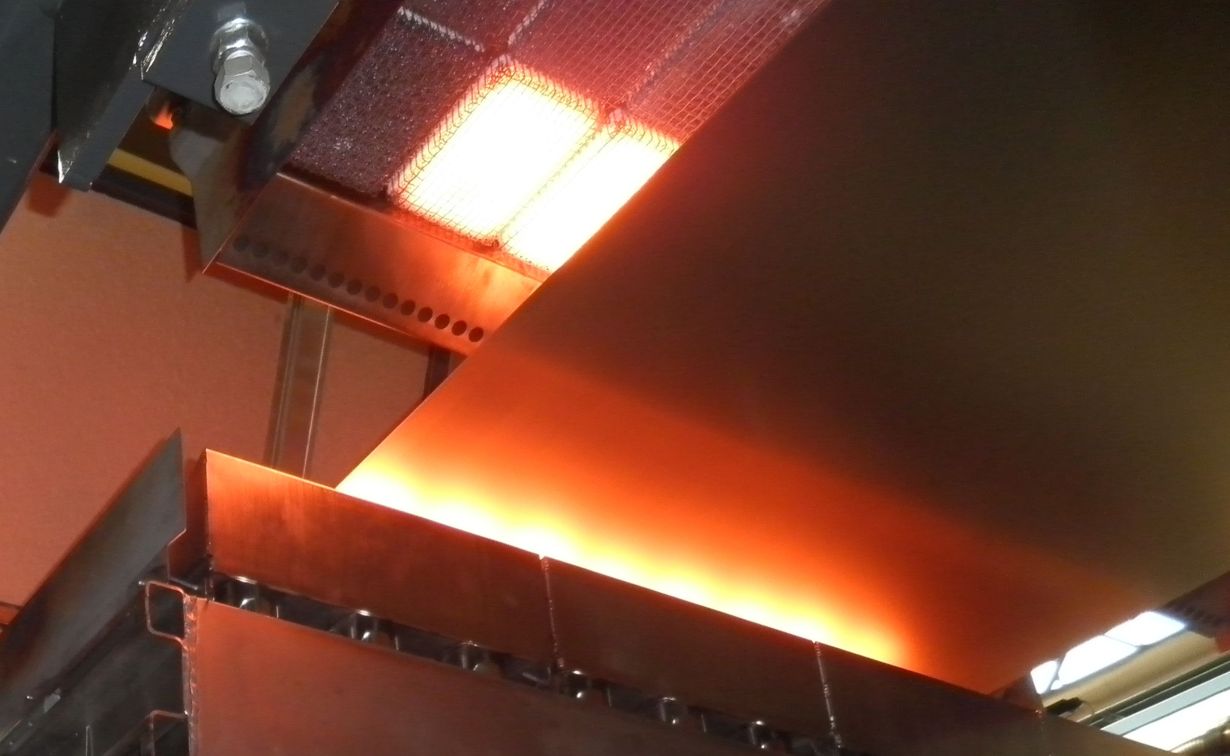Thanks to a new furnace design, energy efficiency in industrial steel strip drying can be significantly increased and the size of the facility drastically reduced. Using the planned process, investment and production costs can be cut by at least 40 percent. This is achieved through the use of infrared radiant burner technology. Implementing this energy-efficient method is the aim of ECCO, a project scheduled to run for four years coordinated by Karlsruhe Institute of Technology (KIT) and funded by the European Union with around eight million euros.
In industry, thin steel sheets wound on rollers are painted for garage doors, for example. The paint consists of a mixture of color pigments, chemical components and necessary solvents. In a continuous process, the steel strip coil is rolled out, the paint is applied to the steel strip, and then dried and cured in a furnace before the strip is cooled down and rolled up again.
This drying and curing process is carried out on a large scale with large quantities of hot air, because the solvents escaping from the paint are flammable. So that no combustible mixture of solvents and air is produced during the process, the solvent fumes have to be diluted with air to a non-inflammatory concentration. This requires large amounts of air and large-scale production plants.
To heat these large quantities of air, a large amount of energy is required. In addition, for environmental reasons the solvents that exist in low concentrations in the drying air have to be removed and this is a highly complex process.
At this point in the manufacturing process the ECCO research project will now implement a more energy-efficient method for operating the furnace. “In this new process, the heat required for drying and curing the painted steel strips is supplied in the form of infrared radiation through radiant burners,” says Professor Dimosthenis Trimis.
These radiant burners are located in the burner section of the furnace. It is separated from the drying and curing section by materials which are permeable for infrared radiation. In the drying section, evaporation creates a very high solvent concentration – in contrast to the conventional process – which is non-flammable because there is no combustion air. This solvent atmosphere is extracted from the drying and curing section, fed into the radiant burners as fuel and completely burned. “This eliminates the need for large quantities of hot air and the removal of the solvents from the air at the end of the process,” says Trimis.
The Institute of Combustion Technology of the Engler-Bunte Institute at KIT is coordinating the research project in the EU’s Horizon 2020 program with funding of around eight million euros. The project started in October 2017 and will run for four years. Participants include twelve partners from industry and other academic institutions from Germany, Italy, Portugal, Sweden, Greece, Belgium and Switzerland.
Being “The University in the Helmholtz Association”, KIT creates and imparts knowledge for the society and the environment. It is the objective to make significant contributions to the global challenges in the fields of energy, mobility, and information. For this, about 10,000 employees cooperate in a broad range of disciplines in natural sciences, engineering sciences, economics, and the humanities and social sciences. KIT prepares its 22,800 students for responsible tasks in society, industry, and science by offering research-based study programs. Innovation efforts at KIT build a bridge between important scientific findings and their application for the benefit of society, economic prosperity, and the preservation of our natural basis of life. KIT is one of the German universities of excellence.

